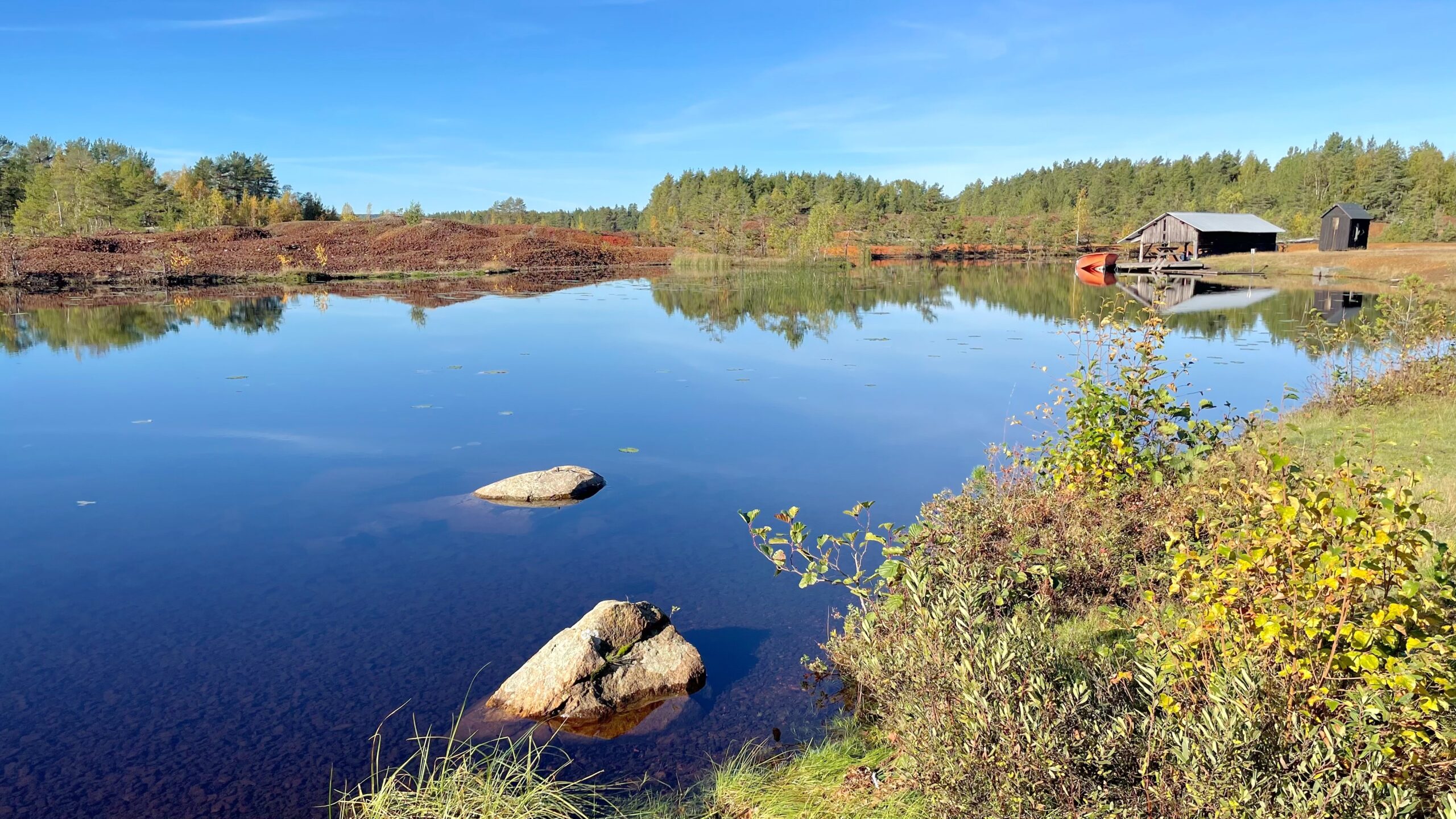The Rogsån river slips quietly into the northern end of Lake Varpan, where the small settlement of Österå rests. Today it seems peaceful, but in earlier centuries this was a centre of roaring furnaces and hammering waterwheels. From the 1400s until the mid-1800s, copper smelters lined these shores, owned by miners tied to the vast Falu Mine. With water power driving the bellows, ore was transformed into copper, and heaps of discarded slag piled up into the landscape we still see, as on the far bank. In the 1600s, thirteen smelters worked here at once, their combined effort leaving behind the great red-coloured mounds that make parts of the area resemble another planet1Österå cabin area and Cachetten https://www.lansstyrelsen.se/dalarna/besoksmal/kulturmiljoer/ostera-hyttomrade-och-cachetten.html?sv.target=12.382c024b1800285d5863a87f&sv.12.382c024b1800285d5863a87f.route=/&searchString=&counties=&municipalities=&reserveTypes=&natureTypes=&accessibility=&facilities=&sort=none.
Now these remains are part of the Falu Mine UNESCO World Heritage Site, preserved as a reminder of the scale of industry that once defined this quiet lakeside scene.
- 1Österå cabin area and Cachetten https://www.lansstyrelsen.se/dalarna/besoksmal/kulturmiljoer/ostera-hyttomrade-och-cachetten.html?sv.target=12.382c024b1800285d5863a87f&sv.12.382c024b1800285d5863a87f.route=/&searchString=&counties=&municipalities=&reserveTypes=&natureTypes=&accessibility=&facilities=&sort=none

Leave a Reply